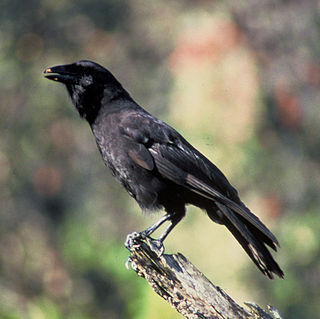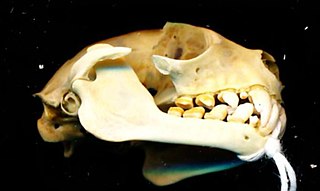
Mackerel is a common name applied to a number of different species of pelagic fish, mostly from the family Scombridae. They are found in both temperate and tropical seas, mostly living along the coast or offshore in the oceanic environment.

Herring are various species of forage fish, belonging to the order Clupeiformes.

The International Union for Conservation of Nature (IUCN) Red List of Threatened Species, also known as the IUCN Red List or Red Data Book, founded in 1964, is an inventory of the global conservation status and extinction risk of biological species. A series of Regional Red Lists, which assess the risk of extinction to species within a political management unit, are also produced by countries and organizations.

The macaques constitute a genus (Macaca) of gregarious Old World monkeys of the subfamily Cercopithecinae. The 23 species of macaques inhabit ranges throughout Asia, North Africa, and Europe. Macaques are principally frugivorous, although their diet also includes seeds, leaves, flowers, and tree bark. Some species such as the long-tailed macaque will supplement their diets with small amounts of meat from shellfish, insects, and small mammals. On average, a southern pig-tailed macaque in Malaysia eats about 70 large rats each year. All macaque social groups are arranged around dominant matriarchs.
Lacertaspis is a genus of skinks endemic to Central Africa.

The guenons are Old World monkeys of the genus Cercopithecus. Not all members of this genus have the word "guenon" in their common names; also, because of changes in scientific classification, some monkeys in other genera may have common names that include the word "guenon". Nonetheless, the use of the term guenon for monkeys of this genus is widely accepted.

Presbytis is a genus of Old World monkeys also known as langurs, leaf monkeys, or surilis. Members of the genus live in the Thai-Malay Peninsula, on Sumatra, Borneo, Java and smaller nearby islands.

The Pantherinae is a subfamily of the Felidae; it was named and first described by Reginald Innes Pocock in 1917 as only including the Panthera species, but later also came to include the clouded leopards. The Pantherinae genetically diverged from a common ancestor between 9.32 to 4.47 million years ago and 10.67 to 3.76 million years ago.

A species that is extinct in the wild (EW) is one that has been categorized by the International Union for Conservation of Nature as only consisting of living members kept in captivity or as a naturalized population outside its historic range. Classification requires exhaustive surveys conducted within the species' known habitat with consideration given to seasonality, time of day, and life cycle. Once a species is classified as EW, the only way for it to be downgraded is through reintroduction.

The harlequin bat is a species of bat in the family Vespertilionidae, the vesper bats. It is the only member of the genus Scotomanes.

The Sunda flying fox or Sunda fruit bat is a species of bat in the family Pteropodidae. It is endemic to Indonesia. The Sunda flying fox is categorized by the IUCN as a Vulnerable species, meaning that it has an Intermediate chance of becoming an endangered species due to the deforestation of mangrove trees for shrimp aquaculture.

The broad-striped tube-nosed fruit bat, also known as the greater tube-nosed bat is a species of megabat in the genus Nyctimene. It is found in West Papua, Indonesia, Papua New Guinea, and central Philippines. In 1912, Andersen distinguished it by its very broad dorsal stripe on the center of its back. Although this species is believed to exist at low densities, the IUCN estimates its population to be stable and has no major threats to its continued existence. The IUCN classifies Nyctimene celaenoThomas, 1922 as a synonym of this species, however as of 2013 the ITIS lists it as a separate species.
Lacertaspis chriswildi, also known commonly as Chris Wild's snake-eyed skink, Chris-Wild's snake-eyed skink, and Chris-Wild's lidless skink, is a species of lizard in the family Scincidae. The species is endemic to Cameroon.
Lacertaspis lepesmei, also known commonly as Angel's five-toed skink, is a species of lizard in the subfamily Eugongylinae of family Scincidae. The species is endemic to the Bambouto massif, Cameroon.
Lacertaspis reichenowii is a species of lizard in the family Scincidae. It is named after Anton Reichenow, German ornithologist.
Lacertaspis rohdei, also known as the Gabon lidless skink or Gaboon lidless skink, is a species of lizard in the family Scincidae. It is named after Reinhold Theodor Rohde, Australian missionary.











